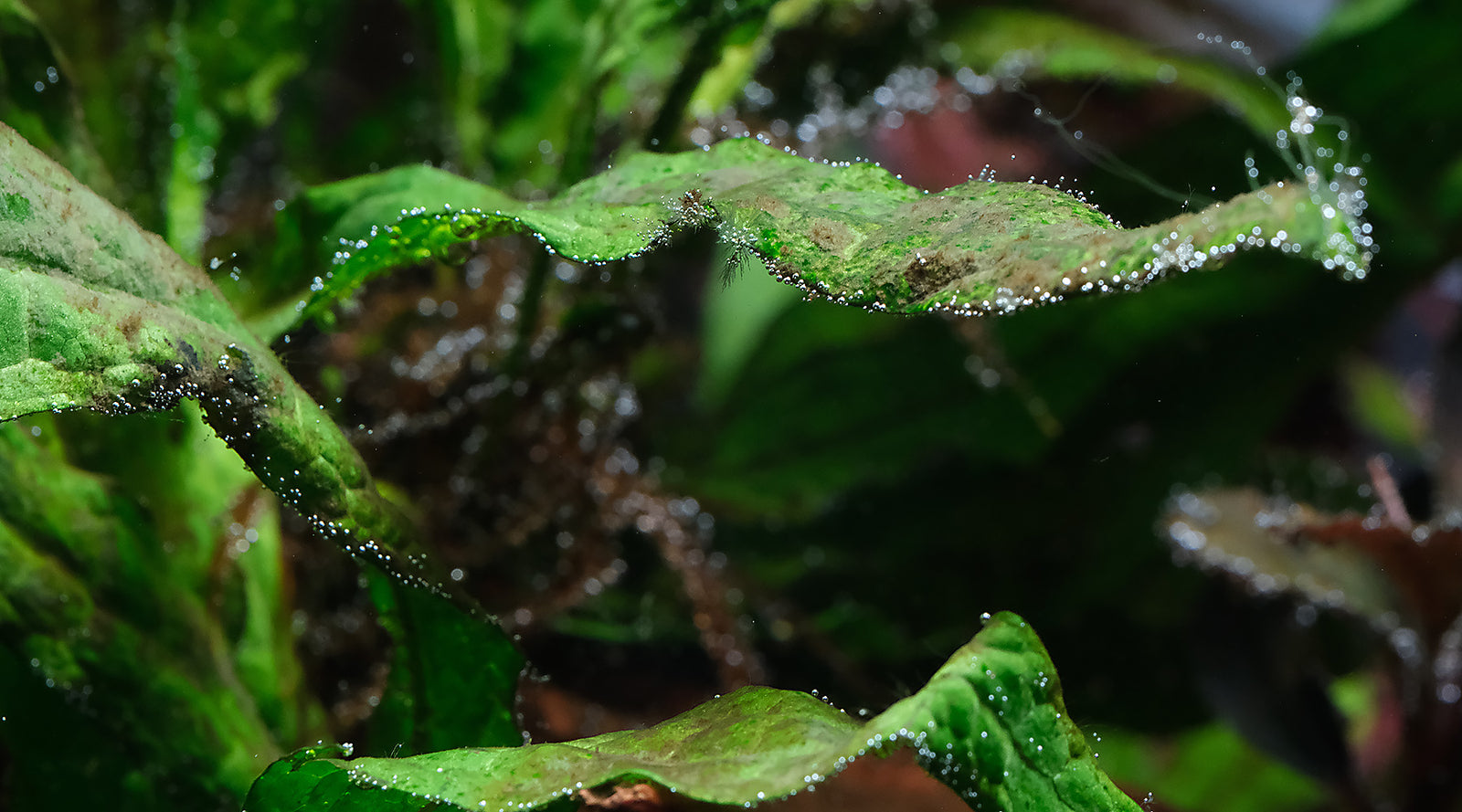DO ‘EXCESS NUTRIENTS’ TRIGGER ALGAE?
Algae requires nutrients to grow, so the idea that if you have large amounts of nutrients in the water, algae will bloom more easily is an intuitive leap to take. This depends on the type of nutrient in question – not all elements have the same impact on the ecosystem. Not all ‘nutrients’ are equal so to say. For example, having 100ppm (parts per million) of Calcium or Potassium has no impact on algae present/absence in tanks, but having even small ammonia spikes can trigger algae – thus having a cycled tank with matured bio-filter is helpful.There is generally little argument against these observations among aquatic plant growers.
Folks wonder more about the role of Nitrates, Phosphates, Iron – does excess dosing of these elements cause algae ?
Both algae and plants will grow faster if there are plentiful nutrients in the water. Algae are microscopic and have much lower nutrient requirements to survive compared to aquatic plants. If plants don’t do well because they are starving, it will lead to deteriorating old growth. The organic proteins released by deteriorating leaves trigger algae spores that feed off these substances. This is why it is common to see algae attaching to older growth and plants that are not growing well. The opposite is also true; healthy plants are extremely algae resistant. Filling up a tank full of healthy plants is the easiest way to get a good head start in planted tank algae control.
Whether you choose to dose more nutrients or less, minimally you must dose enough to ensure that plants are healthy and growing well. Healthy plants are extremely algae resistant. This is true for all scenarios.
In planted aquariums where there is dominant healthy plant mass, nutrient levels in the water column can be maintained at high levels (non-limiting for both plant and algae) yet we can have algae free tanks. This has been demonstrated consistently by well-run tanks by Tom barr and others using the EI method of dosing – where nutrient levels remain consistently high throughout the week ( at no point do plants consume all the nutrients available in the water ).
Tom barr’s tank above demonstrates that having plenty of nutrients in the water does not result in an algae filled planted tank; if there is attention to plant health and overall tank cleanliness.
DOES THIS MEAN THAT WE SHOULD MAINTAIN HIGH LEVELS OF NUTRIENTS IN ALL TANKS?
Of course not. If you have a tank that is fully planted, such as Tom’s tank above, plant dominance allows the tank to be greatly algae-resistant. In tanks that are more sparsely planted, heavy fertilizer dosing can be destabilizing. In the event that algae spores are triggered, and there is a lack of plant mass available to deny the algae space to flourish, algae will spread even more quickly given the elevated nutrient levels.
Green dust algae (GDA) is very common in EI tanks if the tank is not matured enough or does not have enough plant mass for example. Algae issues in these tanks can be much worse than in tanks when water column nutrients are lean.
Iwagumis with only delicate carpets, and hardscape focused aquascapes that have large areas of open sand and rock rock have much lower nutrient requirements compared to heavily planted tanks filled with stem plants. They also have less dominant plant mass to deny algae a home. For those with Iwagumi style and hardscape style planted tank, a combination of lean dosing and good maintenance is an important step in planted tank algae control. They look deceptively simple, but actually require more experience to manage and balance compared to more fully planted tanks. Dosing fertilizers heavily in this style of tanks creates instability and is not something we would recommend.
In hardscape centric competition aquascapes such as this scape by Luca galarraga, overwhelmingly, the chosen dosing approach is lean water column dosing (low NO3, PO4 values) and substrate feeding plants by using rich aquasoil in planted areas. This is to make sure the hardscape is keep as clean of green dust/spot algae as possible.
What to dose more of, and what to dose less of is covered in the nutrient dosing section of this site.



